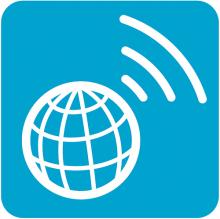Smartphones hog the most data on public Wi-Fi networks

According to a new survey released by the Wireless Broadband Alliance(WBA), smartphone-based hotspots now outweigh those geared towards laptops for the first time.

As next generation hotspots (NGH) are deployed and built on open industry standards, it is expected that more smartphone users will take advantage of open, public Wi-Fi services.
The survey, based on 386 industry responses in Q3 and focused on 'developed' markets, found that hotspot connections are led by smartphone users. 40 percent of connections were made by smartphones, 39 percent were connected through laptops, and 17 percent of public Wi-Fi users joined a network through a tablet. The remaining percentage was unidentified.
It is the first time that smartphones have outranked laptops, but this is unsurprising considering rapid access to the Internet through a smartphone, whereas laptops take more time to power up and connect -- perhaps too much effort if you just want to check your email or surf Facebook for a few spare minutes.
The deployment of NGH networks is expected to rise rapidly by the end of 2013. NGH is used to simplify access to public Wi-Fi networks by allowing secure connections without the need for usernames and passwords, and so could become a useful tool to take some of the strain away from mobile broadband networks, especially if roaming agreements are in place between operators and users.
The WBA's research also found that future public Wi-Fi hotspot growth is expected in four types of location: outdoor areas including parks, transport hubs -- for example, airports and the underground -- popular tourist venues and social venues including bars and cafes. These deployments will be in parallel with 4G LTE deployment, and over 70 percent of operator respondents expect to continue investing in both technologies.
"These findings show that public Wi-Fi is now a crucial part of the mobile experience and this is set to grow enormously with the impending NGH deployments. Large operators are already seeing a significant increase in Wi-Fi usage. China Mobile, for example, saw a 102.5% year-on-year increase in Wi-Fi traffic in H1 2012 and Japan's NTT DoCoMo plans to grow its 14,200 hotspots by as much as 1.5 times before the end of the year," said JR Wilson, Chairman of the WBA.
"In order to sustain this momentum, it is essential that operators continue to work together and employ open standards thereby creating a truly global Wi-Fi network. This is the key aim of the WBA and one that will progress significantly over the next 12 months as advanced NGH trials and deployments take place."